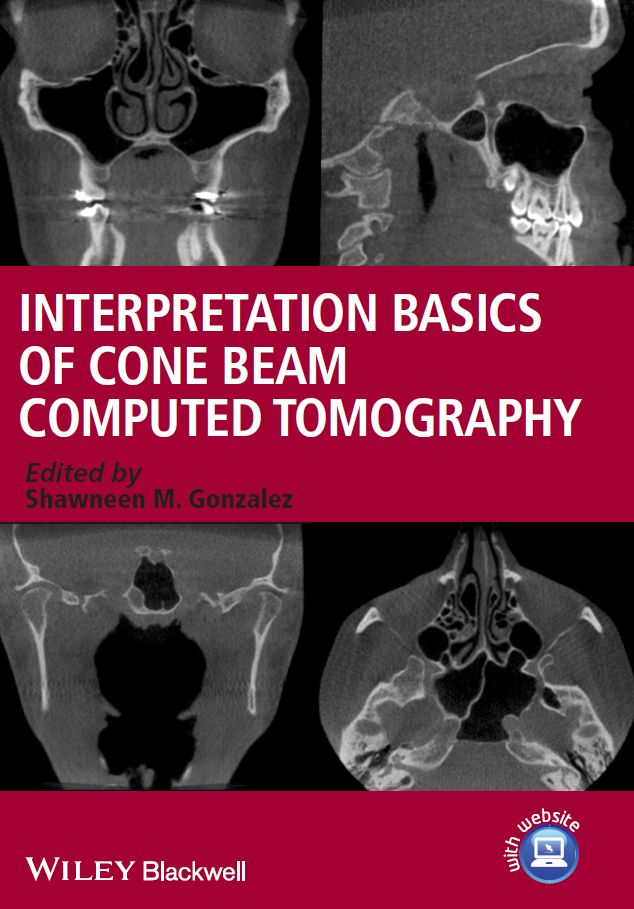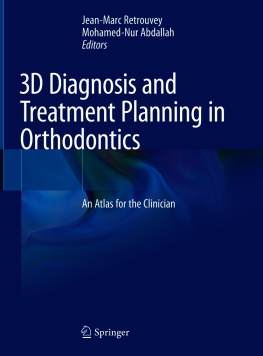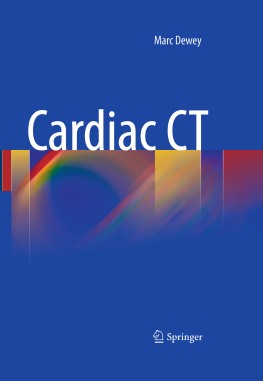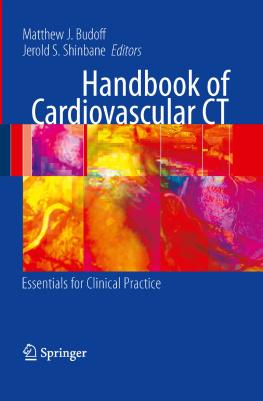Shawneen M. Gonzalez - Interpretation Basics of Cone Beam Computed Tomography
Here you can read online Shawneen M. Gonzalez - Interpretation Basics of Cone Beam Computed Tomography full text of the book (entire story) in english for free. Download pdf and epub, get meaning, cover and reviews about this ebook. year: 2013, publisher: Wiley, genre: Romance novel. Description of the work, (preface) as well as reviews are available. Best literature library LitArk.com created for fans of good reading and offers a wide selection of genres:
Romance novel
Science fiction
Adventure
Detective
Science
History
Home and family
Prose
Art
Politics
Computer
Non-fiction
Religion
Business
Children
Humor
Choose a favorite category and find really read worthwhile books. Enjoy immersion in the world of imagination, feel the emotions of the characters or learn something new for yourself, make an fascinating discovery.

- Book:Interpretation Basics of Cone Beam Computed Tomography
- Author:
- Publisher:Wiley
- Genre:
- Year:2013
- Rating:5 / 5
- Favourites:Add to favourites
- Your mark:
- 100
- 1
- 2
- 3
- 4
- 5
Interpretation Basics of Cone Beam Computed Tomography: summary, description and annotation
We offer to read an annotation, description, summary or preface (depends on what the author of the book "Interpretation Basics of Cone Beam Computed Tomography" wrote himself). If you haven't found the necessary information about the book — write in the comments, we will try to find it.
Interpretation Basics of Cone Beam Computed Tomography — read online for free the complete book (whole text) full work
Below is the text of the book, divided by pages. System saving the place of the last page read, allows you to conveniently read the book "Interpretation Basics of Cone Beam Computed Tomography" online for free, without having to search again every time where you left off. Put a bookmark, and you can go to the page where you finished reading at any time.
Font size:
Interval:
Bookmark:


This edition first published 2014 2014 by John Wiley & Sons, Inc
Editorial Offices
1606 Golden Aspen Drive, Suites 103 and 104, Ames, Iowa 50010, USA
The Atrium, Southern Gate, Chichester, West Sussex, PO19 8SQ, UK
9600 Garsington Road, Oxford, OX4 2DQ, UK
For details of our global editorial offices, for customer services and for information about how to apply for permission to reuse the copyright material in this book please see our website at www.wiley.com/wiley-blackwell .
Authorization to photocopy items for internal or personal use, or the internal or personal use of specific clients, is granted by Blackwell Publishing, provided that the base fee is paid directly to the Copyright Clearance Center, 222 Rosewood Drive, Danvers, MA 01923. For those organizations that have been granted a photocopy license by CCC, a separate system of payments has been arranged. The fee codes for users of the Transactional Reporting Service are ISBN-13: 978-1-1183-8106-9/2014.
Designations used by companies to distinguish their products are often claimed as trademarks. All brand names and product names used in this book are trade names, service marks, trademarks or registered trademarks of their respective owners. The publisher is not associated with any product or vendor mentioned in this book.
The contents of this work are intended to further general scientific research, understanding, and discussion only and are not intended and should not be relied upon as recommending or promoting a specific method, diagnosis, or treatment by health science practitioners for any particular patient. The publisher and the author make no representations or warranties with respect to the accuracy or completeness of the contents of this work and specifically disclaim all warranties, including without limitation any implied warranties of fitness for a particular purpose. In view of ongoing research, equipment modifications, changes in governmental regulations, and the constant flow of information relating to the use of medicines, equipment, and devices, the reader is urged to review and evaluate the information provided in the package insert or instructions for each medicine, equipment, or device for, among other things, any changes in the instructions or indication of usage and for added warnings and precautions. Readers should consult with a specialist where appropriate. The fact that an organization or Website is referred to in this work as a citation and/or a potential source of further information does not mean that the author or the publisher endorses the information the organization or Website may provide or recommendations it may make. Further, readers should be aware that Internet Websites listed in this work may have changed or disappeared between when this work was written and when it is read. No warranty may be created or extended by any promotional statements for this work. Neither the publisher nor the author shall be liable for any damages arising herefrom.
Library of Congress Cataloging-in-Publication Data
Gonzalez, Shawneen, author.
Interpretation basics of cone beam computed tomography / Shawneen Gonzalez.
p. ; cm.
Includes bibliographical references and index.
ISBN 978-1-118-38106-9 (paper : alk. paper) ISBN 978-1-118-76222-6 (ePub) ISBN 978-1-118-76224-0 (ePDF) ISBN 978-1-118-38106-9
I. Title.
[DNLM: 1. Cone-Beam Computed Tomography. 2. Radiography, Dentalmethods. 3. Craniofacial Abnormalitiesdiagnosis. 4. Skullradiography. WN 230]
RK309
617.607572dc23
2013024994
A catalogue record for this book is available from the British Library.
Wiley also publishes its books in a variety of electronic formats. Some content that appears in printmay not be available in electronic books.
Cover design by Nicole Teut
For Tyson, Max, and Rugan
It is the goal of this book to help practitioners and students gain a better understanding of anatomy and common disease processes that frequently present on cone beam computed tomography scans. This book seeks to fill the gap in the current literature where little is presented on common radiographic appearances on cone beam CT. In addition to this book, there are five sample cases with selected images online at www.wiley.com/go/gonzalez/cbct , where you can practice working your way through each region and using the knowledge you will acquire in this book.
The beginning of the book covers general information about different unit parameters and how these can play a role in the outcome of the scan including but not limited to slice thickness and what is recommended based on what is being evaluated (i.e., possible root fracture versus bone quantity for implants). The second chapter is about legal considerations of owning a cone beam CT, referring patients for a cone beam CT scan, and/or interpreting cone beam CT scans. This information is lacking in the current literature and is something many professionals do not consider but should be aware of before purchasing or using a cone beam CT unit.
Each book chapter is an anatomical region covering the topics of normal anatomy, common anatomical variants, and frequently seen disease processes. The first regions presented are the paranasal sinuses and mastoid air cells and nasal cavity and airway, which are intimately involved with each other. The normal anatomy section covers pertinent anatomy to evaluate when interpreting or reviewing a scan. The next section covers common anatomical variants with various images showing how they appear on axial, coronal, and sagittal views. The last section covers commonly seen disease processes, such as sinusitis, that should be noted on a written radiology interpretation.
The following chapters on the cranial skull base and brain and orbits are also intimately involved as they are directly adjacent to each other. There are many anatomical landmarks in the cranial skull base such as canals, foramina, air cells, and more making this a difficult region to interpret. Key anatomy is shown on various views (axial, coronal, and sagittal) to aid the practitioner and the student in orienting themselves on the scan. There is no key anatomy covered for the soft tissue of the brain due to limitations of soft tissue imaging on cone beam CT scans. Disease processes and anatomical variants of entities such as vascular markings and pineal gland calcifications are covered in their respective chapters.
The region of the cervical spine and soft tissue of the neck cover normal anatomical appearances to disease processes such as degenerative joint disease and arterial calcifications. Degenerative joint disease is progressive with multiple appearances based on the degree of bony damage. This chapter has many example images of degenerative joint disease at various points in the disease process.
The last region covered is the temporomandibular joints, which is very thorough thanks to the contributions of Gayle Reardon who has studied and continues to study this region in depth. The temporomandibular joints have a unique set of disease processes and developmental appearances beyond arthritic changes. This chapter covers entities many practitioners and students should be aware of even if they are not seen in daily practice.
The appendices show example written reports of cone beam CT scans for practitioners and students to view and consider when writing their own radiology interpretation. There is also a short section with recommended websites and books to learn more about cone beam CT with more obscure disease processes such as malignancies, benign neoplasms, and cysts covered in detail in the recommended books.
Next pageFont size:
Interval:
Bookmark:
Similar books «Interpretation Basics of Cone Beam Computed Tomography»
Look at similar books to Interpretation Basics of Cone Beam Computed Tomography. We have selected literature similar in name and meaning in the hope of providing readers with more options to find new, interesting, not yet read works.
Discussion, reviews of the book Interpretation Basics of Cone Beam Computed Tomography and just readers' own opinions. Leave your comments, write what you think about the work, its meaning or the main characters. Specify what exactly you liked and what you didn't like, and why you think so.









